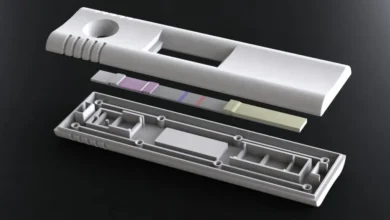What is XML Trojan 47249 virus?

XML Trojan 47249 virus: XML.Trojan.47249 is a type of Trojan malware that has been reported affecting Excel (.xls / .xlsx) and XML files. Rather than being a classic virus that spreads on its own, it appears to operate via false positives in antivirus software or mis‐configured security settings, which cause legitimate files to be quarantined, deleted, or treated as malicious.
Despite its name suggesting it is in or associated with “XML” files, the bigger problem many users face is that Excel documents are being automatically deleted or made inaccessible when the antivirus flags them under the “XML.Trojan.47249” signature.
How Does XML.Trojan.47249 Operate?
Here’s how this Trojan (or mis-detection) tends to behave:
-
The antivirus (especially Quick Heal has been frequently mentioned) detects certain Office / XML / Excel files as infected with XML.Trojan.47249.
-
Upon detection, the antivirus quarantines the file, or worse, automatically deletes it without user consent.
-
Users report that just opening an Excel file, or scanning, triggers the antivirus to remove it.
-
Some files might be recoverable from the antivirus’ quarantine area once appropriate updates/patches are applied.
It is not fully clear in all reporting whether the Trojan is an actual malware payload doing damage, or more of a false‐positive virus signature or bug in antivirus definitions that misclassifies legitimate XML/Excel files. Many sources suggest the latter.
Impact: What Happens When Your System is Affected
Here are the main consequences people have reported when dealing with XML.Trojan.47249:
Loss of important files
Many users noticed their Excel spreadsheets (or other XML‐based documents) being deleted or disappearing. Since these often contain sensitive or critical data (financial sheets, reports, logs), this is damaging.
Data inaccessible / false alarms
Sometimes files are moved to quarantine, meaning they are not lost, but unavailable until restored. Users unfamiliar with how antivirus quarantine works may assume total loss
Software trust issues
Because legitimate files are being flagged, users lose confidence in their antivirus. This can lead to disabling protection, which opens risk for real threats.
Operational disruption
For businesses or individuals relying on Excel workflows, automatic deletion/quarantine of files causes workflow disruption, delays, maybe even financial loss
Malware scare / panic
Even before proving whether it’s a false positive or actual malware, many reports spread fear (on forums, social media), which can lead to rash fixes or unnecessary reformatting or reinstalling.
Detection and Diagnosis: How to Know If You’re Affected
If you suspect XML.Trojan.47249 is impacting your system, here are signs and steps to confirm:
-
Missing Excel / XML files
If files you saved are missing without you manually deleting them. Especially those with extensions.xls,.xlsx,.xml. -
Antivirus alerts
Getting messages that “XML.Trojan.47249” has been detected, or seeing files moved to “Quarantine” with that name. -
Automatic deletion on open or scan
When you try to open a file, or when the antivirus performs automatic or scheduled scan, the file may vanish. -
Check quarantine / virus definition updates
Sometimes the antivirus vendor releases a patch or update acknowledging the issue. Checking if virus definitions were recently updated is helpful. -
Review antivirus logs
Go into antivirus logs to see what action was taken ‒ whether the file was flagged, deleted, or quarantined. If many legitimate files are being treated this way suddenly, that’s a red flag. -
Cross-compare versions
If other users of the same antivirus or same version report the issue it may be a bug in that version.
How to Remove / Recover Files & Fix the Issue
If you are already affected, here are steps to restore files and mitigate loss, and fix your settings:
-
Update antivirus software & virus definitions
Many reports indicate the fix is delivered via new definitions / patch from the antivirus vendor (e.g. Quick Heal) that stops false detection / auto deletion. -
Check quarantine area / restore files
-
Open: Antivirus → Settings → View Quarantine / Quarantined Files.
-
Look for dates around when files disappeared, filter by
.xls, .xlsx, .xml. -
Select needed files and click Restore.
-
-
Exclude certain file types / folders (temporarily if needed)
Until vendor’s patch fully resolves, you might need to exclude Excel / XML file extensions or certain folders from real-time scanning or automatic deletion. Be careful: this reduces protection risk. -
Backup regularly
Always keep backups of important files separate from your main system (cloud, external drives). That way even if something gets deleted, you have copies. -
Contact vendor / support
If update doesn’t fix or files are not recoverable, reach out to the antivirus vendor’s support (for example, Quick Heal) with logs, sample files if possible. -
Use file recovery tools
If files are deleted (not just quarantined) and backups are unavailable, using data recovery tools (assuming they haven’t been overwritten) may help. But success is not guaranteed.
Prevention: How to Avoid Future Problems
Preventing a repeat of an incident like this involves being proactive:
-
Keep your antivirus and OS updated
Defintion files, patch releases often include bug fixes or adjustments that correct false positives. -
Use a reliable antivirus vendor
Select vendors with good track records and quick response to reported false positives. -
Maintain backups offsite / off network
Whether via cloud, external drive, or backup database, ensure multiple copies of critical files exist. -
Set up exclusion rules carefully
If you must exclude certain file types, do so but in trusted directories. Don’t broadly exclude whole drive or system folders un-necessarily. -
Monitor antivirus behavior
Periodically review antivirus logs; check quarantined files; see what files are being flagged. If you notice legitimate files getting flagged, pause to investigate. -
Educate users
For businesses, ensure staff know not to disable antivirus just because of false positives, and know where the quarantine is and how to restore files.
Myths vs. Reality: Clarifying Misconceptions
Because reports are sometimes unclear or speculative, it helps to dispel some myths around XML.Trojan.47249:
| Myth | Reality |
|---|---|
| It is guaranteed malware that corrupts your system or steals data. | Many reports show it’s a false positive / detection error rather than active malicious code. No large scale proof of data stealing has been confirmed. |
| Only Quick Heal is affected. | Quick Heal is one vendor frequently mentioned, but user reports suggest that others may also be affected, though to lesser extent. Still, most reports focus on Quick Heal. |
| Once deleted, files are gone forever. | Not necessarily. Many have been restored from quarantine once definitions were updated. Some may still need recovery tools if deleted. |
| Disabling antivirus is the solution. | Disabling entirely may stop false deletions but opens risk for real threats. Better is to apply updates, exclude specific file types, or use vendor’s patch. |
What to Do Now: Action Plan
If you’re currently facing issues or want to proactively protect yourself, here’s a step-by-step action plan:
-
Scan files and check antivirus notifications
Look for files flagged with “XML.Trojan.47249”. -
Update antivirus software immediately
Also update virus definitions. Many issues resolved through updates. -
Inspect quarantine directory
Restore any legitimate files (especially .xls, .xlsx, .xml) from there. -
Backup latest state of your documents
Then make a copy of all critical files to external storage/cloud. -
Set up exclusion rules
For trusted folders or file types to avoid unintentional deletion (but do this carefully). -
Monitor for vendor patch announcement
Check the antivirus vendor’s website / support forums for bugfix patch, version updates that directly address this issue. -
Review antivirus settings for “auto-delete” risks
See if there’s a setting where detections automatically delete without asking. Ideally set it to “quarantine & ask user”. -
Educate all users on system
If you share or manage for multiple people, inform them how to react (don’t immediately panic or delete antivirus, instead report and wait for fix).
Conclusion
XML.Trojan.47249 is a prominent example of how false positives / antivirus signature bugs can be almost as disruptive as actual malware. Even though it may not always represent a malicious actor corrupting your system, the effect—deleted or inaccessible files—can be serious. The good news is that many affected users have been able to restore files via quarantine, and vendors have released updates to repair the issue. Being diligent about updates, backups, and security settings can help avoid major losses. Keep calm, check your antivirus logs, restore what you can, and prepare for future incidents more robustly.
Frequently Asked Questions (FAQs)
-
Is XML.Trojan.47249 a real virus or just a false detection?
It appears to be more of a false positive or signature bug in antivirus software. While some sources call it a “Trojan”, many affected users say that no malicious behavior (data stealing, spreading) has been proven. -
What antivirus software is most affected?
Quick Heal is the most commonly cited in reports. Other antivirus vendors may also be impacted, but evidence points especially to Quick Heal’s definitions/behavior. -
Can I get my files back if they were deleted?
Yes — if they were quarantined, you can usually restore them once the antivirus update or patch corrects the issue. If they were permanently deleted (and overwritten), recovery is tougher. -
Should I disable my antivirus until this is fixed?
Disabling antivirus entirely is not recommended, because that increases risk of real threats. A better strategy is to update, set exclusions for trusted file types or folders temporarily, and keep regular backups. -
How can I prevent something like this in future?
Maintain regular backups, keep antivirus software and OS updated, monitor what your antivirus is doing (quarantined files etc.), choose reliable vendors, and configure settings more conservatively (e.g. avoid auto-delete without confirmation).




